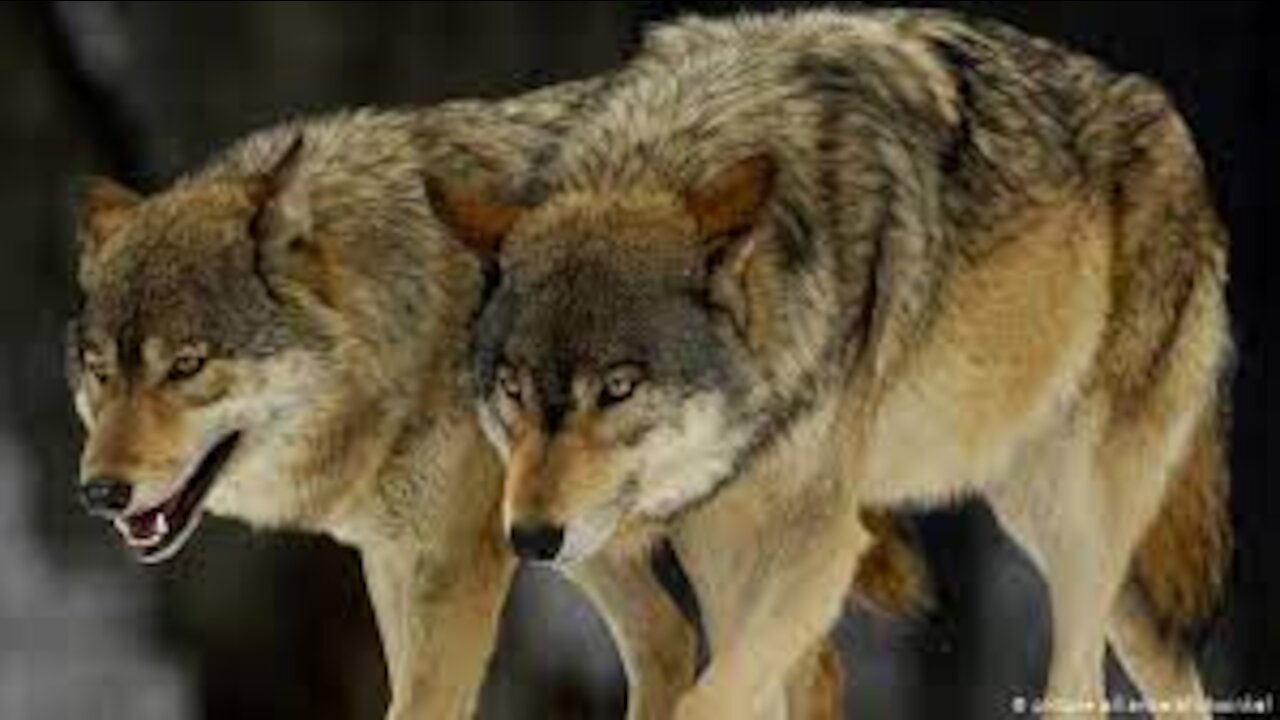Premium Only Content

Huge Wolf came out from the woods
The wolf (Canis lupus[a]), otherwise called the dim wolf or dark wolf, is a huge canine local to Eurasia and North America. In excess of thirty subspecies of Canis lupus have been perceived, and dark wolves, as informally comprehended, involve non-homegrown/wild subspecies. The wolf is the biggest surviving individual from the family Canidae, guys averaging 40 kg (88 lb) and females 37 kg (82 lb). Wolves measure 105–160 cm (41–63 in) long and 80–85 cm (31–33 in) at shoulder tallness. The wolf is likewise recognized from other Canis species by its less pointed ears and gag, just as a more limited middle and a more extended tail. The wolf is regardless related intently enough to more modest Canis species, like the coyote and the brilliant jackal, to create ripe cross breeds with them. The united hide of a wolf is normally mottled white, earthy colored, dark, and dark, despite the fact that subspecies in the icy locale might be practically all white.
Of all individuals from the class Canis, the wolf is generally specific for agreeable game chasing as exhibited by its actual transformations to handling enormous prey, its more friendly nature, and its exceptionally progressed expressive conduct. It goes in family units comprising of a mated pair joined by their posterity. Posterity may leave to frame their own packs on the beginning of sexual development and because of rivalry for food inside the pack. Wolves are likewise regional and battles about an area are among the chief reasons for wolf mortality. The wolf is mostly a flesh eater and feeds on enormous wild hooved vertebrates just as more modest creatures, domesticated animals, remains, and trash. Single wolves or mated combines ordinarily have higher achievement rates in chasing than do enormous packs. Microorganisms and parasites, quite rabies infection, may taint wolves.
The worldwide wild wolf populace was assessed to be 300,000 of every 2003 and is viewed as of Least Concern by the International Union for Conservation of Nature (IUCN). Wolves have a long history of cooperations with people, having been loathed and pursued in most peaceful networks on account of their assaults on animals, while alternately being regarded in some agrarian and agrarian social orders. The wolf is additionally viewed as the predecessor of most homegrown canine varieties. Albeit the dread of wolves exists in numerous human social orders, most of recorded assaults on individuals have been credited to creatures experiencing rabies. Wolf assaults on people are uncommon on the grounds that wolves are generally not many, live away from individuals, and have fostered a dread of people in light of their encounters with trackers, farmers, and shepherds.
-
 1:52
1:52
KGTV
4 years agoTiger Woods recovers from injuries
506 -
 6:32
6:32
KGTV
4 years agoTiger Woods recovering from crash
2.27K -
 0:31
0:31
WFTX
4 years agoTiger Woods recovering from crash
885 -
 1:07
1:07
PatriotDeb6770
4 years ago $0.04 earnedSpringtime woods, view from our patio
1752 -
 1:53
1:53
KGTV
4 years agoTiger Woods recovering from injuries after crash
145 -
 0:28
0:28
WPTV
4 years agoTiger Woods returns to Florida to recover from car crash
31 -
 4:35
4:35
Trail cameras and adventures
4 years agoCreature From The Deep Woods
86 -
 0:30
0:30
torinoscj
4 years agoHuge chunk of ice from Lantego
54 -
 2:00
2:00
ViralHog
4 years ago $0.07 earnedHuge Lava Fountains Explodes From Volcano
3.07K2 -
 4:16
4:16
World Changers For Christ
4 years agoPraise The Lord from Jeff Woods and Mike Ware
41